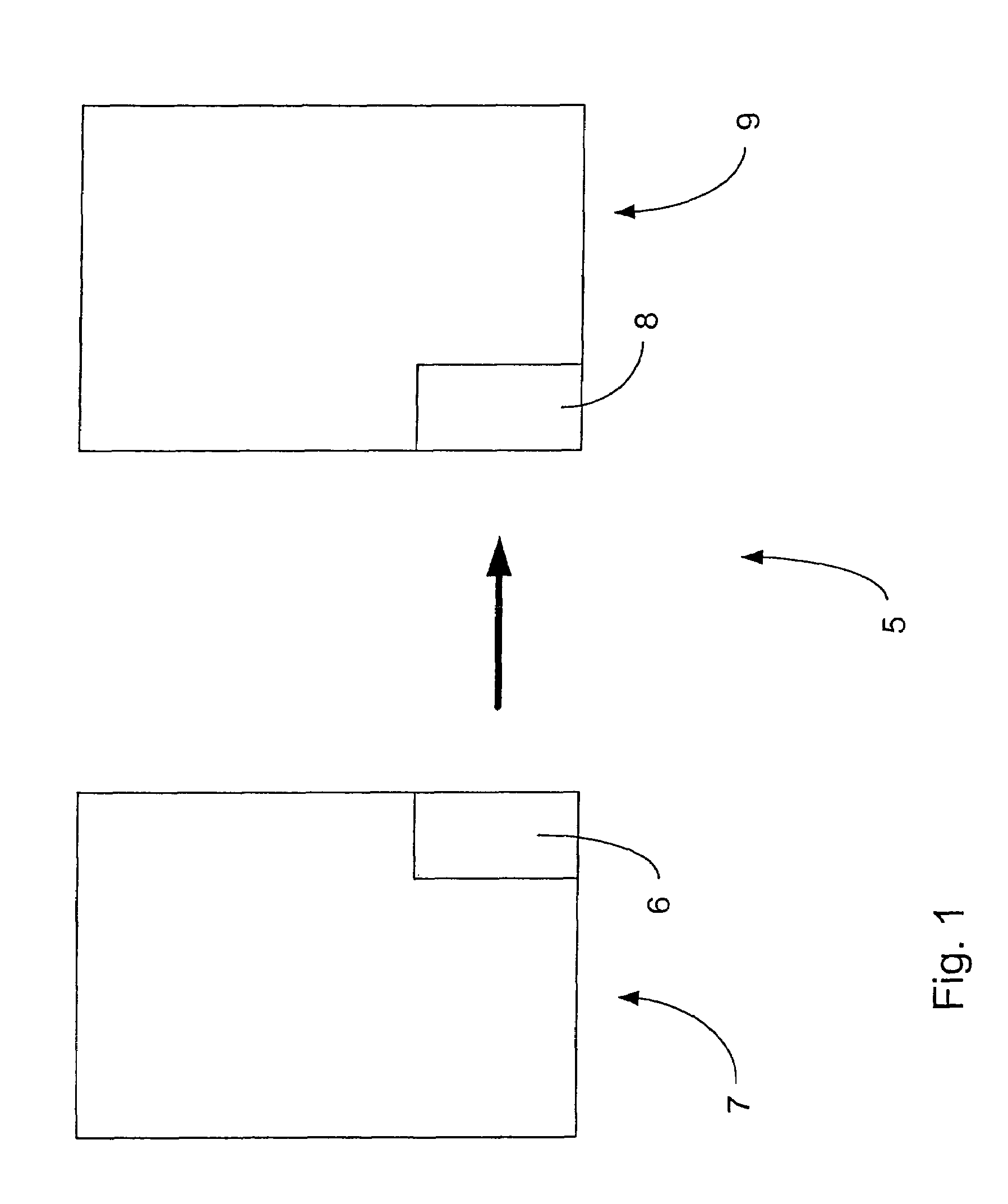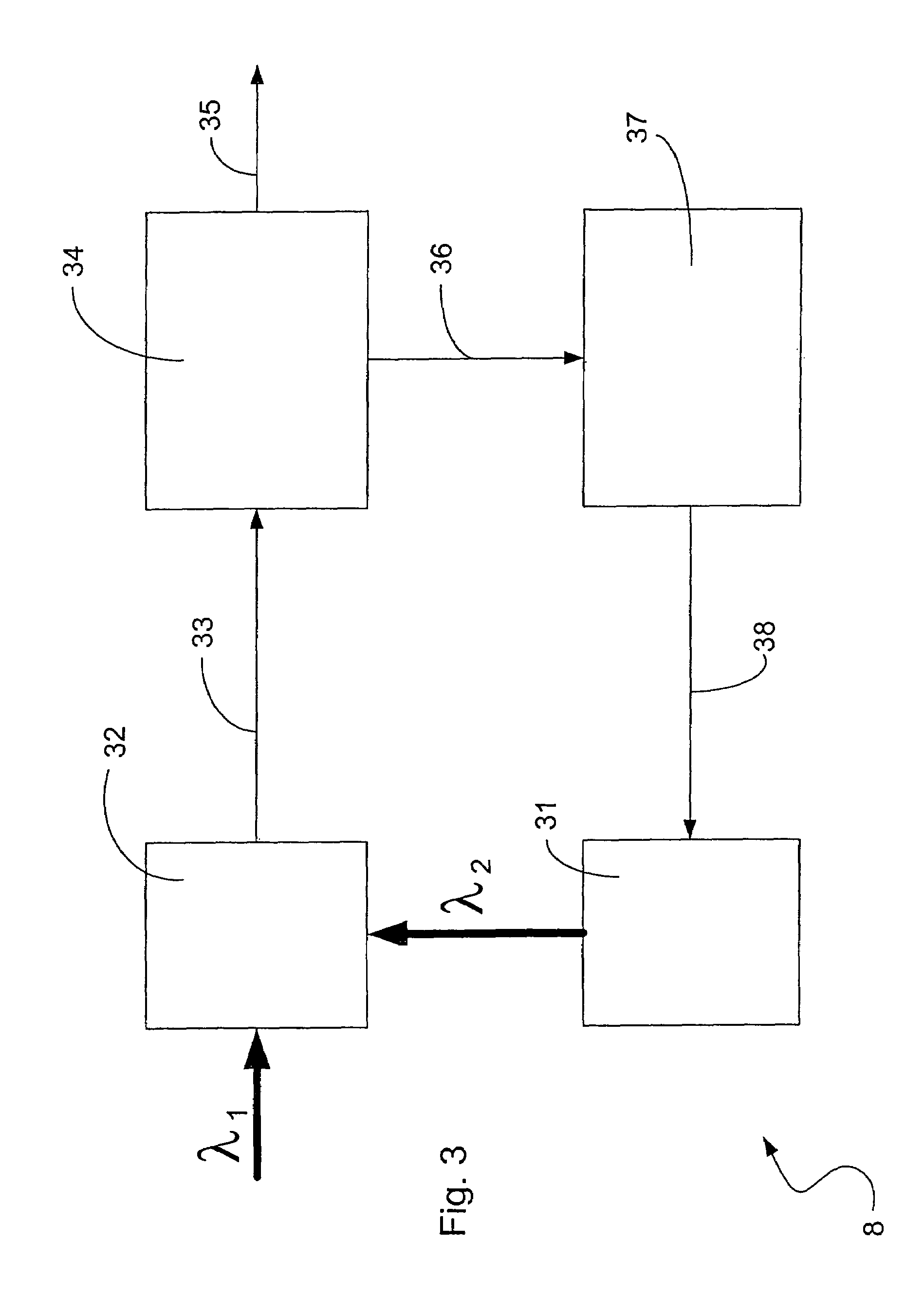Generation of M-ary digital signaling constellations directly at lightwave frequencies
a technology of digital signaling constellations and lightwave frequencies, applied in optics, instruments, electrical equipment, etc., can solve the problems of no similar device operating at optical frequencies, increased construction and maintenance costs, and increased technical complexity of modulators and demodulators used in generating transmitted signals and recovering data from received signals, so as to avoid potential rf-type problems, avoid system complexities, and reduce the effect of cos
- Summary
- Abstract
- Description
- Claims
- Application Information
AI Technical Summary
Benefits of technology
Problems solved by technology
Method used
Image
Examples
Embodiment Construction
[0038]An optical communication system 5 of the present invention includes an optical transmitter 6 that may reside on a first satellite 7. as shown in FIG. 1. The transmitter 6 transmits an optical signal that propagates through space to an optical receiver 8 that may reside on a second satellite 9. Of course, a more practical system might include both a transmitter 6 and a receiver 8 on each of the satellites 7 and 9. but the system is shown in simplified form in FIG. 1 for ease of illustration. Although the system 5 is shown in exemplary fashion in an inter-satellite application, the present invention is equally applicable to other scenarios such as communication between space and ground and vice versa, as well as ground-to-ground scenarios. Among other things, the transmitter 6 includes a direct photonic M-ary digital signaling constellation generator and the receiver includes a frequency-locked heterodyne photonic downconverter.
[0039]The constellation generator is shown in furth...
PUM
| Property | Measurement | Unit |
|---|---|---|
| wavelength | aaaaa | aaaaa |
| wavelengths | aaaaa | aaaaa |
| wavelengths | aaaaa | aaaaa |
Abstract
Description
Claims
Application Information
 Login to View More
Login to View More - R&D
- Intellectual Property
- Life Sciences
- Materials
- Tech Scout
- Unparalleled Data Quality
- Higher Quality Content
- 60% Fewer Hallucinations
Browse by: Latest US Patents, China's latest patents, Technical Efficacy Thesaurus, Application Domain, Technology Topic, Popular Technical Reports.
© 2025 PatSnap. All rights reserved.Legal|Privacy policy|Modern Slavery Act Transparency Statement|Sitemap|About US| Contact US: help@patsnap.com



